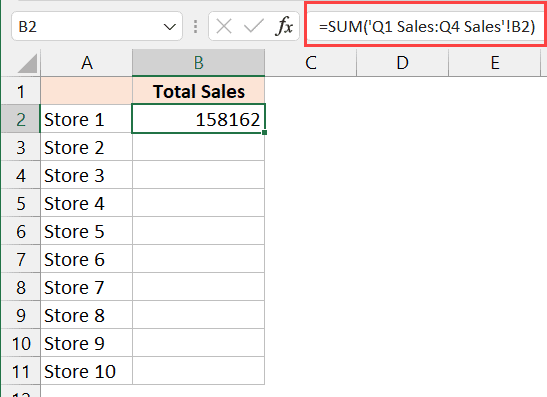Compare Two Excel Sheets in Excel 2016 Easily

Comparing two Excel sheets can be a daunting task, especially when you have extensive data to analyze. Excel 2016 offers several built-in tools and functions that can simplify this process significantly, saving you time and reducing the likelihood of errors. In this post, we will explore various methods to compare two Excel sheets with precision and ease, covering everything from basic visual inspections to advanced functions.
Why Compare Excel Sheets?

Before diving into the “how-to” of comparing sheets, let’s understand why this is often necessary:
- Data Validation: To ensure data accuracy across different data sets or updates.
- Error Detection: Identifying discrepancies or mistakes introduced during data entry or transfer.
- Merging Data: When combining data from multiple sources, comparing sheets helps in seamless integration.
- Historical Comparisons: Comparing different versions of datasets to track changes or updates over time.
Visual Comparison

The simplest method involves manually scanning the sheets for differences:
- Open both Excel files or sheets you want to compare.
- Arrange the windows side by side:
- Go to the “View” tab.
- Click on “View Side by Side” if you’re using separate Excel windows.
- If using different sheets within one workbook, select “New Window” for each sheet from the “Window” tab, then enable “Arrange All” to view side by side.
- Scroll both sheets simultaneously by using “Synchronous Scrolling” to highlight any discrepancies visually.
🔍 Note: This method works well for smaller data sets or when the differences are obvious and few in number.
Using Conditional Formatting

For a more systematic approach, Excel’s Conditional Formatting can highlight differences:
- Select the range of cells in the first sheet to compare.
- Navigate to the “Home” tab, then click on “Conditional Formatting”.
- Select “New Rule”, then “Use a formula to determine which cells to format”.
- Enter a formula like =A1<>Sheet2!A1 to highlight cells in sheet 1 that are different from corresponding cells in sheet 2.
- Choose a format, like cell color, to indicate differences.
- Repeat for the second sheet.
Excel Formulas

If you need to identify discrepancies or matches programmatically, formulas can do the heavy lifting:
- Exact Comparison: Use =EXACT(A1,Sheet2!A1) to see if two cells match exactly, including case.
- Differences: Apply =IF(A1=Sheet2!A1,“Match”,“Differs”) to indicate whether cells are identical.
- Highlighting: Combine formulas with Conditional Formatting to highlight differences.
Using the INQUIRE Add-In

For a more advanced comparison:
- Download and install the INQUIRE add-in from Microsoft.
- Go to the “Inquire” tab (which will appear after installation).
- Select “Compare Files” to open the comparison tool.
- Browse for the first and second file to compare.
- The tool will generate a detailed comparison report, showing all differences between the two sheets.
Power Query (Get & Transform)

Excel 2016 includes Power Query for data transformation and comparison:
- Go to the “Data” tab, click on “Get Data” > “From Other Sources” > “From Microsoft Query”.
- Connect to your Excel workbook, choose your sheets, and load them into Power Query Editor.
- Use the “Merge Queries” option to align and compare the data from both sheets.
- Customize the comparison criteria using the various Power Query transformation options.
Tables for Quick Comparison

| Method | Advantages | Limitations |
|---|---|---|
| Visual Inspection | Quick for small datasets, no technical knowledge needed. | Time-consuming for large datasets, prone to oversight. |
| Conditional Formatting | Highlight differences visually, adaptable for different needs. | May not catch all types of discrepancies; limited by Excel’s formatting capabilities. |
| Formulas | Provides a programmatic approach to comparison, scalable. | Requires formula knowledge; can be complex for complex comparisons. |
| INQUIRE Add-In | Automated detailed comparison report. | Add-in installation required; not native to Excel, can be slow for large files. |
| Power Query | Powerful for merging and comparing datasets; integrates with Excel for easy data manipulation. | Steep learning curve; complex setups for some comparisons. |

Recap of the Comparison Techniques

We’ve explored various methods to compare two Excel sheets in Excel 2016. From simple visual inspections to the use of advanced tools like Power Query, each method has its place depending on the size of your dataset, the complexity of the comparison, and your familiarity with Excel’s features. The choice between them often depends on:
- The size and complexity of your data.
- The time you’re willing to invest in setting up the comparison.
- Your comfort level with Excel’s features.
- The precision level you need for your analysis.
By mastering these techniques, you’ll be able to identify, highlight, and resolve discrepancies efficiently, making data management in Excel 2016 a smoother and more reliable task.
Can I compare Excel sheets from different files?

+
Yes, you can use any of the methods described above, especially INQUIRE Add-In or Power Query, to compare sheets from different Excel files.
What if the sheets have different formatting?

+
Formatting differences won’t affect data comparison when using formulas or Power Query. However, for visual methods, you might need to adjust formatting for a better comparison.
How do I handle sheets with additional columns or rows?

+
Use Power Query to append or merge sheets, ensuring the datasets are aligned before comparison. Formulas can also be adjusted to account for extra data.
Is there an automatic tool for Excel sheet comparison?

+
The INQUIRE Add-In provides an automatic comparison tool that generates a report, making it easier for users without advanced Excel knowledge.